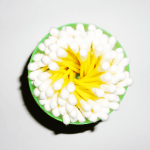How To Clean A Microscope
A Microscope is an expensive piece of equipment, so you must understand how to clean a microscope correctly, so there’s no damage to the sophisticated optics. You also need to maintain its pristine condition.
The optical elements of microscopes require regular cleaning if you want to obtain high-quality images and make microscopy worthwhile. Over time neglecting a microscope’s maintenance will allow dirt, lint, dust, etc., to harm the optics.
Most owners are unsure of how to clean a microscope and how to get the best results without risk to the microscope; this article will discuss the best way to clean microscopes and answer the essential question what do you clean microscope lenses with?

Microscope Maintenance
If you leave a microscope to stand for any length of time, it will attract microscopic dust and debris from the air. This is inevitable and bears no relation to whether it’s an old or new microscope, even if you know how to store a microscope properly.
Microscopes in regular use don’t escape the build-up of contaminants either. Anyone using the microscope will transfer oil or sweat from the hands, eyelashes, and condensation from breathing will impact the microscope.
How To Store A Microscope
Before we discuss how to clean a microscope, let’s briefly discuss the best way to store a microscope.
- Every time after use, cover with the dust cover that the manufacturers supply with the microscope
- Always find a dry, cool space for your microscope
- Never store your microscope in direct sunlight
- Be extra vigilant when handling your microscope not to touch the optical lens with bare hands
- If you are going to store the microscope in any humid conditions, then use an airtight, waterproof container, and if at all possible, use a drying agent in the container
Tips On Microscope Cleaning

Before we discuss how to clean your microscope a few words of caution:
- Moving a microscope can permanently damage the instrument if you don’t take proper care. For example, if you’re careless and drop or just knock the microscope, it’s easy to cause damage internally or knock the lens out of alignment
- Don’t make matters worse by adding more dust, debris, or fingerprints to the lens while attempting to clean the microscope
- Avoid cleaning the microscope in direct sunlight or high temperatures
Microscope Cleaning Materials
- Microscope lens cleaning solution: Will remove any dirt, dust, and film build-up on your lenses. At the same time, it will add a protective layer to the lens to slow down any future residue’s build-up. The microscope cleaning solution has antistatic properties and is suitable for cleaning the microscope tube
- Microscope Lens cleaning paper: this is by far the best way to clean objectives and eyepieces
- Soft Lens Brush: Helps to brush off the dust from lenses without touching the lens
- Air Blower: Use this to blow dust from the optics, so there’s no necessity to touch them, leave fingerprints and oil residue on the lens, and prevent accidentally scratching the lens
- Microfiber cloth
How To Clean A Microscope Lens

Objectives and eyepieces are the parts of your microscope that get the brunt of the exposure to eyelashes, oils, dirt, and dust, and whatever other contaminants have come into contact with your microscope.
The vast majority of dust on your lenses isn’t anything to concern you and, in point of fact, will not affect the quality of the microscope’s optics. But, while you’re cleaning the microscope, you might as well blow this dust off anyway. But don’t think dust like this on the optics is the sole reason for cleaning them.
Let’s look at cleaning your microscope lens in a series of steps.
- The first thing is to take a close look at the lens surface. You need to see what’s facing you and what needs cleaning. The easiest way is with a loupe; if you don’t possess one, use the eyepiece from your microscope.
- Once you’ve taken a look, remove all of the dust with the air blower. Don’t be tempted to use compressed air products used on electronics because they involve solvents for propellants. These are essentially very bad for optics; in fact, they will damage them beyond repair by removing the lens optical coating.
- Using a sheet of lens paper, wrap it around one finger. You must use lens paper. Don’t be tempted to use household tissues or, worse, paper towels; they might not feel coarse and rough to you but believe me, they are to your optics, and they will scratch them. If you have no lens paper handy, avoid cleaning your microscope until you have lens paper available. If the optic’s surface is too small for your finger, create a point with the lens paper to adequately clean their surfaces.
- Using just a small amount of lens cleaning fluid, apply it to the tip of the lens paper. Our recommendation is a 70% ethanol solution because it’s safe for the lens surface and still cleans and disinfects appropriately. Cleaning the lens surface should begin from the center in a circular motion while moving outwards to the edge.
- When it comes to cleaning the microscope’s larger surfaces, such as the glass stage plates, use a mild solution of soapy warm (not hot) water is best, you can use your hands after soaping rinse thoroughly in cool, clean water until all traces of the soapy water are gone. Place the glass on the microfiber cloth and dry it off. Leave it to dry further. One tip is to use distilled water because you will not leave any mineral deposits on the glass, which can happen with tap or bottled water.
- When you’re ready to clean the surface of the light exit glass and condenser, wrapping the lens paper around your finger is by far the most straightforward way to clean them.
- Use each sheet of lens paper only once.
- Using your loupe again (or eyepiece), check to see that all of the dust and marks are gone. If you find there are still specks of dust or anything else on any of the components, you will have to commence the same process one more time.
- When you are certain everything is clean, put the microscope back together again.
Conclusion
Avoid using anything that will scratch or remove the coating from optical surfaces such as tissues, cotton buds, dry cloths, etc.
Don’t use optical spray cans; they will leave residue behind after they dry, and that will severely hinder your viewing experience. Never use everyday household products such as window cleaners on microscope lens. We hope you now have a good idea of how to clean a microscope.



















